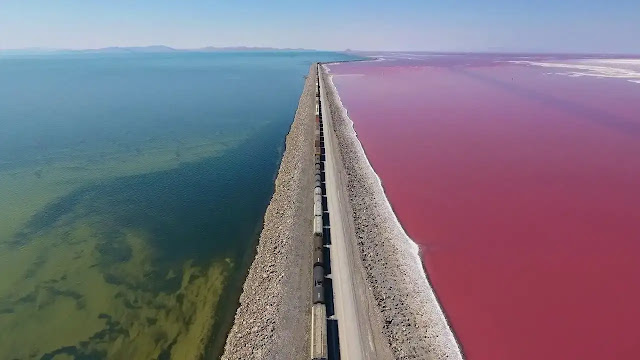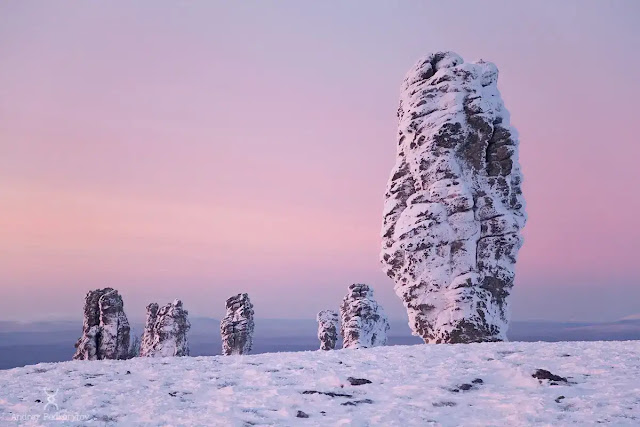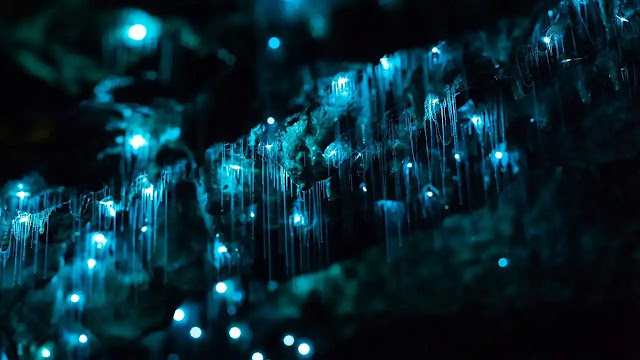Science, Art, Litt, Science based Art & Science Communication
Darvaza Gas Crater, Turkmenistan
Darvaza Gas Crater also known as "Door to Hell" or "Gate of Hell". The name "Door to Hell" was given by the locals, referring this place to the fire, boiling mud, and orange flames. This mysterious place is situated in Derweze, Turkmenistan. The view of the flame burning in the desert is bewitching and intriguing, but not many have an idea of how this wonder appeared. This place was founded in 1971 when geologists started to drill for natural gas, and during the drilling, an accident happened, and equipment and transport fell down in a big hole. The team decided to burn it off because of fear that the hole would lead to the release of poisonous gases. Years have been passed but it is still burning today.
Spotted Lake, Canada
This bizarre lake that is highly concentrated with diverse minerals. This lake is situated in the northwest of Osoyoos in the eastern Similkameen Valley of British Columbia, Canada. Over the summer, most of the water in the lake evaporates and reveals colourful mineral deposits. Due to the evaporation of water, large spots appear on the lake with different coloured combinations due to mineral composition. This lake contains some of the world's highest quantities of Magnesium Sulfate, Calcium and Sodium Sulfates. It also contains concentrations of other minerals such as Silver and Titanium. Originally known that the first nations considered it a sacred site. The lakes minerals were also put to use in the manufacture of ammunition during World War I.
Yosemite Firefall, California
A fantastic waterfall that is called Yosemite Firefall. This Firefall is located in Yosemite National Park in California. This waterfall is a seasonal waterfall that appears only in February if conditions are perfect. If the Sun sets in just the right position to light up the Falls, it will make them appear as if they are on fire. A phenomenon is known as a Firefall, a sublime trick of winter light that mixes melting snow with the setting Sun. The National Park Service close two of the three best-viewing sites in 2020 due to large congregations of people that caused damage to sensitive plants.
Dallol, Ethiopia
One of the most strange and mysterious places on earth is Dallol. It is situated in the northeast of the Erta Ale Range in Ethiopia. This beautiful and magnificent place has been formed by the intrusion of magma into Miocene salt deposits and subsequent hydrothermal activity. Dallol is a place with a strange landscape and the hottest temperature on earth. Salt and volcanic minerals create vivid colours. When you'll see it, it seems like this landscape is from another planet. This landscape is indeed unique, bizarre and beautiful. Dallol is a collapsed volcano crater filled with acid bonds poisonous chlorine and sulfur gases.
Coloured Lakes of Kelimutu, Indonesia
Coloured Lakes are located in Kelimutu, Indonesia. These lakes are the creation of another one bizarre volcano. They can change colour at any time even from black to white, or from turquoise to red. The colours of the lake systematically change due to adjustments in the oxidation-reduction of the fluid of each lake. Many believe that the lakes are resting place for departed souls, and a God of the afterlife will send those who died to different lakes depending on their virtues in life. At the bottom of the Kelimutu crater, you can see blue fire blowing out of the ground that is really strange and wonderful. The vibrant blue hue of these flames is the result of heavy sulfur deposits in the volcano.
Honghe Hani Rice Terraces, China
We have mysterious wonderland Honghe Hani Rice Terraces that are located in Yunnan, China. When the Sun rises over the surrounded mountains, the rice terraces mysteriously change its colours. These rice terraces are around 1,200 years old. The amazing sunrise in this place makes you never want to leave. These rice terraces have been recognized as the most beautiful curvy lines of the world. It is the only man-made wonder that has sculpted from Earth and has been declared a UNESCO World Heritage Site in 2013.
Giant Crystal Lake, Mexico
This beautiful natural phenomenon was discovered in April 2000 at a 980 feet depth in Nikko mine located in Mexico. It is extremely hot with air temperatures reaching up to 58 degrees Celsius and 90 to 99% of humidity. Without proper protection, people could only endure approximately 10 minutes in the cave. The giant crystal cave contains 500,000 years old giant selenite crystals. They are the largest natural crystals ever found. The largest one has 39 feets length and weights of 55 tons. The crystal turned to such gigantic sizes because they were submerged in mineral-rich water with a very narrow stable temperature.
The Great Salt Lake, USA
Moving onto number nine, we have the Great Salt Lake. This lake is located in the northern part of the U.S. state of Utah. This lake is a part of the massive ancient Lake, Bonneville. The Great Salt Lake is the largest saltwater lake in the Western Hemisphere. This lake is also the eighth-largest terminal lake in the world. Now it is landlocked, and its water is very salty. Early explorers thought the lake was an inland extension of the Pacific Ocean or that a river connected the lake to the ocean. Some Indians and early settlers thought the lake was resided by a terrifying monster with a gigantic head. Its stories are an interesting part of Utah's landscape and history. This lake has minerals in access, due to which swimming in the Great Salt Lake is similar to floating. This lake is also known as the American's Dead Sea. The Lake's shallow and mild water cause frequent, sometimes heavy lake-effect.
Manpupuner Rock Formations, Komi Republic
Next place from our list is Manpupuner rock formations. These mysterious rock formations are appointed as one of the seven wonders of Russia, also known as the Seven Strong Men Rock Formations and the Poles of the Komi Republic. These rocks are approximately 200 million years old. These rocks were considered to be the holy place for indigenous Mansi people once, and climbing these rocks was considered as a sin. The Seven Stone Men Rocks Formation is one of the toughest challenges for rock climbers across the world due to their massive height that ranges from 98ft to 137ft.
Waitomo Glowworm Caves, New Zealand
Number one from our list is Waitomo Glowworm Caves that are situated at Waitomo on the North Island of New Zealand. The magical Waitomo Caves have been attracting visitors thanks to their incredible limestone formations and luminescent glowworms. The glow worms that live in these caves are the larvae of a species of Arachnocampa Luminosa. These species are unique in New Zealand. These insects spend most of their life as larvae. They spend sticky threads from the roof of the cave and use the light from their tails to attract other insects and trap them in the threads for a meal.
Views: 126
Replies to This Discussion
-
94
-
-
Nice.
However, Komi Republic part is repeated. -
-
Yes, I deleted one now. Thanks for bringing it to my notice. While multitasking, I overlook some things. :)
-
-
---
---
---
-
-
---
-
© 2025 Created by Dr. Krishna Kumari Challa.
Powered by
![]()


